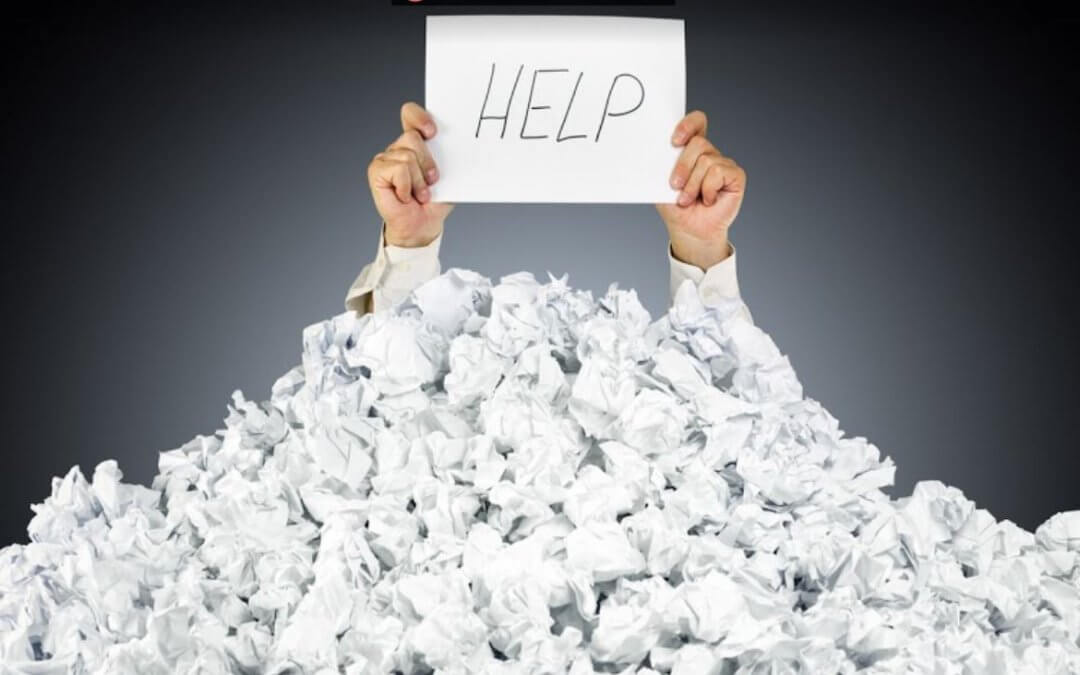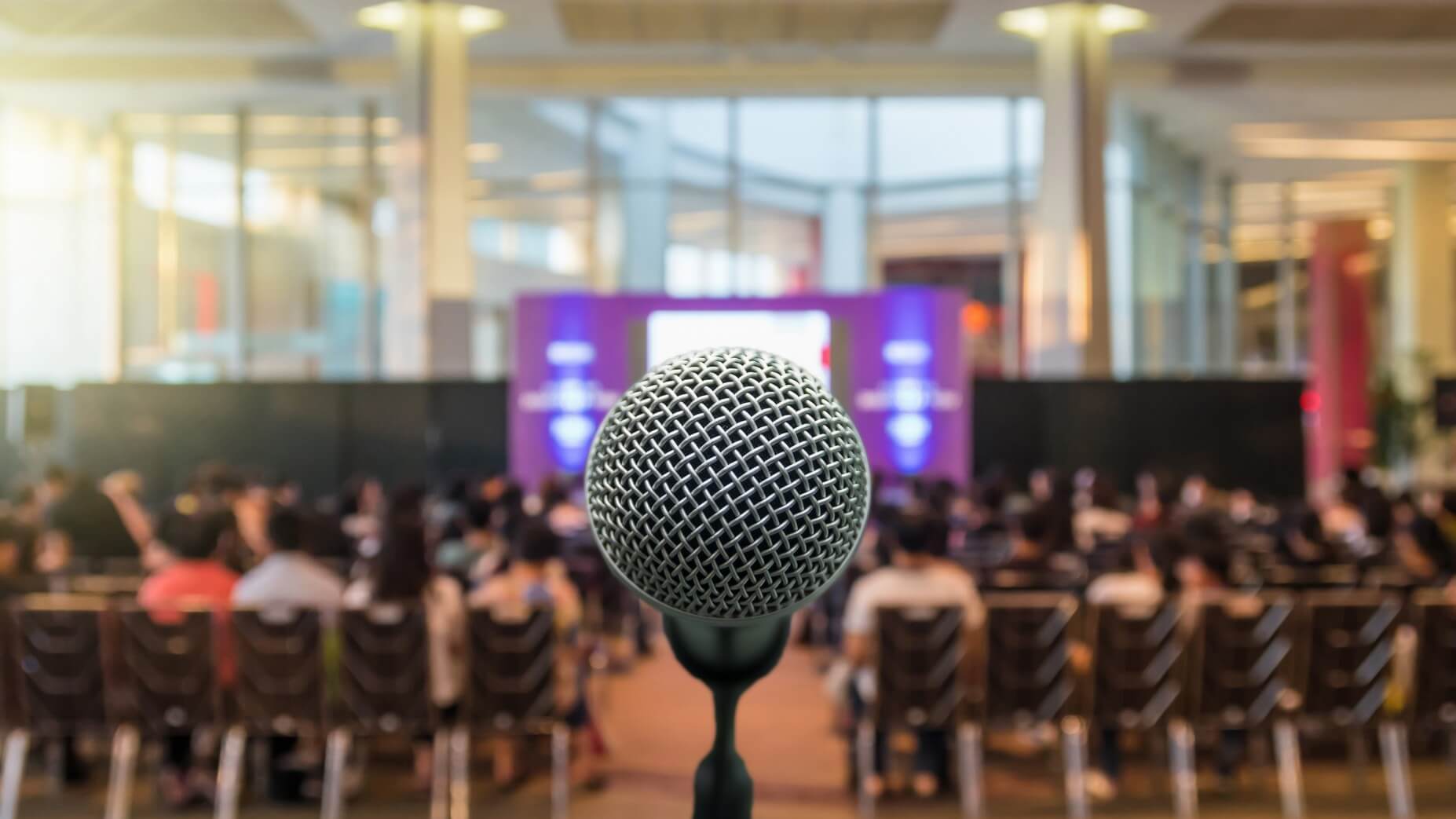Find your One Thing BEFORE you create structure, add detail, or create visuals for your speech.
We recently traded in the family wagon. After almost a decade of serving us as a baseball team bus, daily commuter, vacation host, carpool waiting room, mobile business office, and teen driving trainer, it was time to find a more reliable steed. In preparation for the deal, I went to clean out the old vehicle. I found:
- A steering wheel cover (not on the steering wheel)
- two canisters and two pouches of wet wipes
- a can of fix-a-flat
- three umbrellas
- two towels
- Seven coronavirus masks
- two tire pressure gauges
- about 50 pens, highlighters, and markers
- enough napkins to absorb the water in a kiddie pool
- eight catalogs
- two bottles of bug spray
- Three reusable grocery bags
- Nine (9!) unopened bottles of water
- One opened bottle of water
- A car sunshade
- A bag of plastic silverware (whiteware?)
- Two bottles of hand cleaner
- Umpteen small trial size lotion bottles
- An AC vent phone holder (not in the vent)
- Six canisters of Chapstick
- A bag of coins
- A bag of makeup
- One screwdriver and one multitool
- Two flashlights (one of them worked!)
- A corroded D-cell battery
- One bottle and four sticks of sunscreen
- An expired driver’s license
- An expired AAA card
- A vacuum cleaner attachment (I’d been looking for that!)
- Three pairs of sunglasses
- A very old stick of bubblegum
- Two USB chargers
- Two old iPhone cables, two current iPhone cables
- A Bible
- Two books
- A large bottle of hand sanitizer, three small bottles of same
- Two pairs of gloves
- Discarded folded aluminum foil
- A bottle of ibuprofen
- A bottle of vitamins
- Three notepads
- Several buttons
- A paperclipped stack of membership cards
- Lots of coupons
- And about a cup of colored sand loose in the floorboard.
It’s hard to imagine a situation we weren’t prepared for (if only we knew the object was there – it’s easier to just pull into Dollar General and buy what you need!). We were unaware we were carrying enough logistics to supply a small regiment, and we felt stressed whenever we tried to find something of use (like the registration when we took it to get it inspected).
From what I’ve observed, most people make speeches like we keep our family car. They keep adding things and never stop to organize, filter, or clean up. They want to put everything in the speech. This causes three problems for the audience.
Three problems for your audience when you put EVERYTHING in your speech and you don’t find your one thing first:
- They don’t know what is important – When we share a lot of information, the mind cannot absorb it all. The audience likely doesn’t have the context or information to rate the incessant stream of information coming their way. The speaker must highlight what is worth spending precious memory cells to understand and retain.
- They can’t follow or take notes – The more information we share, usually the less organized it is. Even if it is organized, too much of it makes the brain tired and causes attention to wane. Again, a steady stream simply cannot be processed.
- They get easily bored and possibly even mad when you run over – It’s hard to imagine any business audience wanting a message to take longer than is necessary. When you are scheduled to speak for a finite amount of time, in the Western world they want (expect?) you to finish in that amount of time. Also, when information that is not relevant or interesting is shared, the audience tunes out. The best way to end on time is to know exactly what you want/need to say and say no more. Time is saved in the details, not the core message.
One of the key principles we teach in our Content workshops is the idea of One Thing. Find your One Thing before you create structure, add detail, or certainly create visuals. It’s a very difficult process – so difficult that I’ve only had one client who could tell me their One Thing the first time they were asked ( “Little things make a big difference” – Stan Phelps turned out to be a friend and colleague and it’s led to twelve books, the latest co-written with me: Silver Goldfish).
The next time you’re asked to lead a meeting, give a presentation , make a pitch, or train an audience, find your One Thing first. Contemplate the absolute minimum content your audience would need or want. Aim for that. If they ask for more, then back up the car and start unloading what you’ve collected within the structure you’ve created. There’s a reason you were asked to speak. We know you have more to share. But clean up and reduce your content to support your One Thing. You’ll have a better feel for what you want to say and your audience will be thrilled to settle into a clean vehicle to get what they want.
Don’t believe me? Then maybe Curly can convince you.
Related Videos:
Communication matters. What are you saying?
Want more speaking tips? Check out our Free Resources page.
We can also help you with your communication and speaking skills with our Workshops or Personal Coaching.
This article was published in the March edition of our monthly speaking tips email newsletter, Communication Matters. Have speaking tips like these delivered straight to your inbox every month. Sign up today to receive our newsletter and receive our FREE eBook, “Twelve Tips that will Save You from Making a Bad Presentation.” You can unsubscribe at any time.




